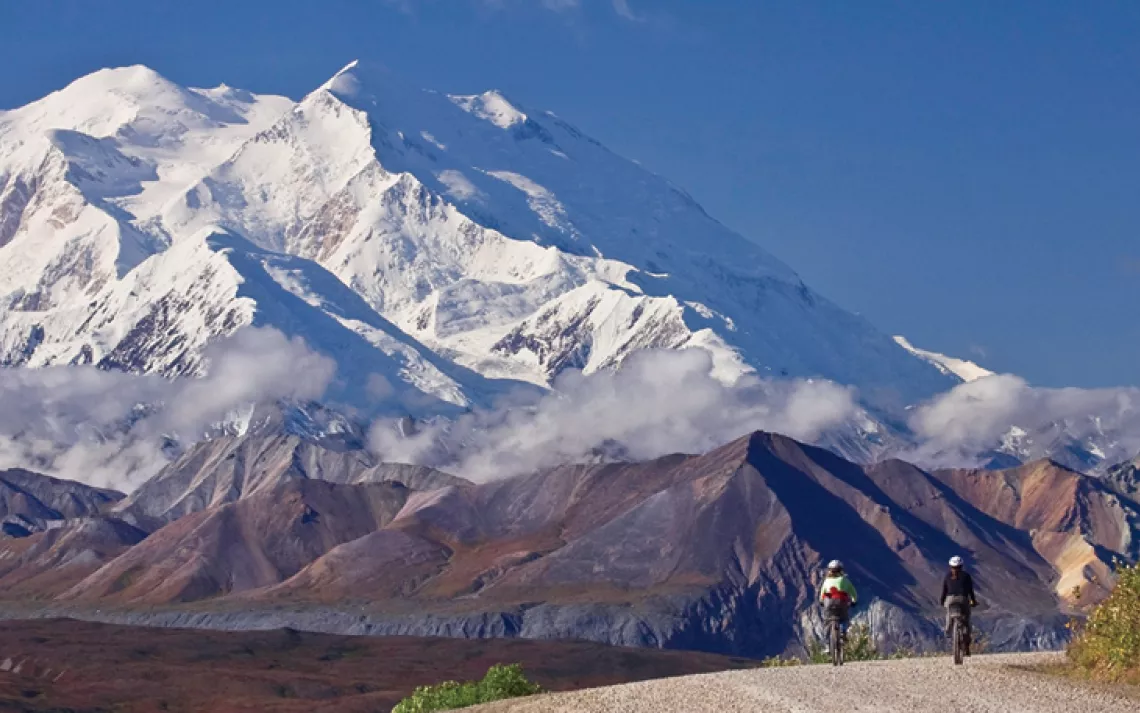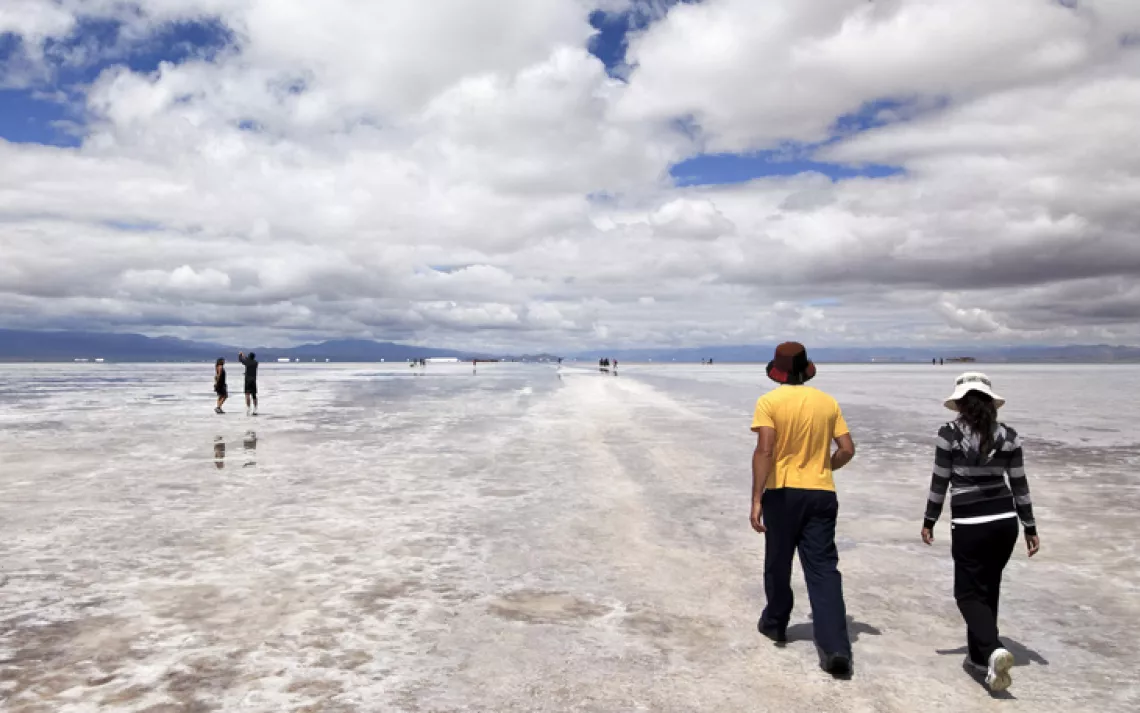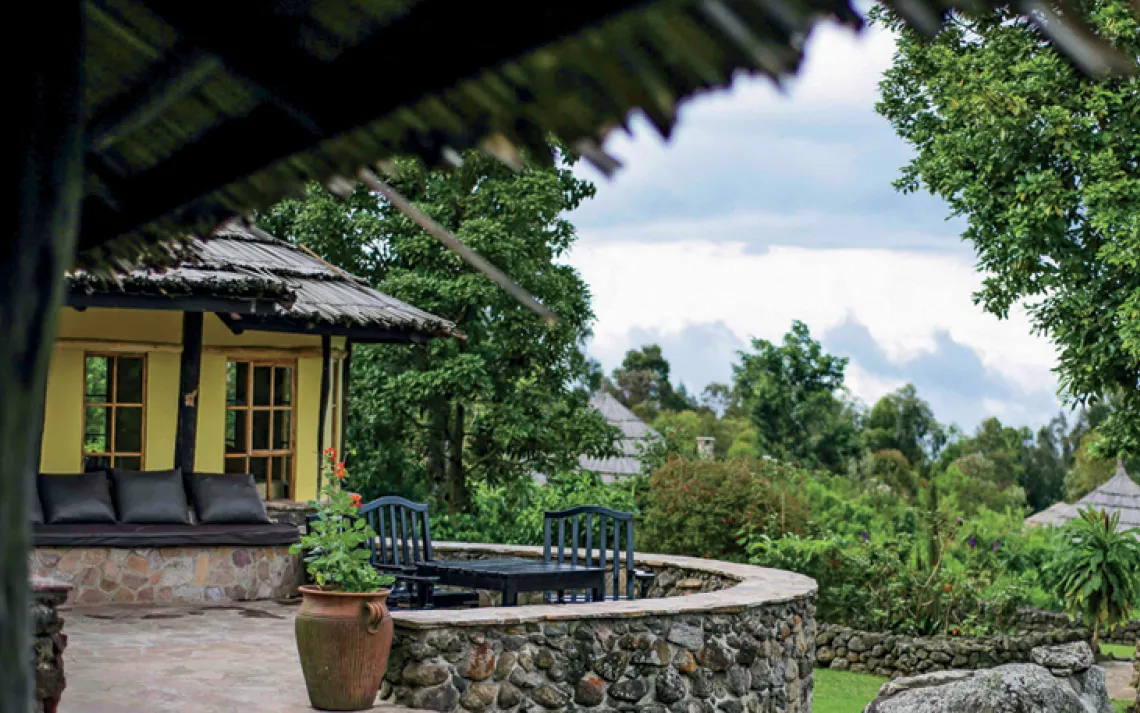The 8 Weirdest Lakes in the World
August 13, 2014

“Earth tones” doesn’t have to mean boring shades of green and brown; nature is painted with a much more colorful palette. Water is no exception. There are hundreds of unusually-colored lakes, rivers and hot springs around the world, and their color is often a product of the microorganisms that live there.
“Algae can thrive in any condition,” said Dr. Russell Cuhel, scientist at the University of Wisconsin’s School of Freshwater Sciences. “Different kinds of algae like cold temperatures, others like hot temperatures, some like acid, some like alkali, some like salty water, some like clear water, some like brown water. There are algae that will grow extremely well in almost any environment.”
Many of the following bodies of water have a dense salinity content and reach temperatures of 90ºF or higher. These conditions aren’t hospitable for most animal and plant life, but since algae can grow in diverse conditions, they have almost no competition for resources.
Click through the photos above to find out what’s coloring the water.
Photo courtesy of Pixabay/Steppinstars
Grand Prismatic Hot Spring, Wyoming

Yellowstone National Park's Grand Prismatic Hot Spring is the largest in North America, and the third-largest in the world. It’s beautiful, too; rings of orange and yellow circle an impossibly blue center. This spring can reach 188ºF, and microbes thrive in its warm water, forming the colorful bands that surround it.
“The water that’s coming up from the bottom is loaded with hydrogen sulfide, iron, methane, and all kinds of primordial chemicals,” said Dr. Cuhel. “The bacteria in the water that get their energy from these minerals are able to withstand extremely high temperatures and they sometimes have a photo pigment.”
But why do the colors have such distinct rings? The water in the center is so hot that nothing can grow there, which keeps the water pure blue. The yellow and orange areas are cooler, and different types of bacteria thrive in those regions.
Photo courtesy of iStockphoto/pazzophoto
Champagne Pool, New Zealand

A votre santé! This hot spring in Waiotapu, New Zealand brings to mind mist drifting up from a bottle of bubbly. The mist hovering above the pond is caused by a similar phenomenon: CO2 from underwater bubbles up and produces a foggy effect. The alkaline water is hot, reaching temperatures of up to 165ºF. The orange ring around the pool is, like in the Grand Prismatic Spring, a product of heavy metal sulfide deposits.
Photo courtesy of Flickr/Gopal Vijayaraghavan
Green Crater Lake, Costa Rica

This jade-green lake is at the summit of the Irazú Volcano in Costa Rica. This active volcano last erupted on former president John F. Kennedy’s trip to Costa Rica in 1963. The lake gets its color from mineral byproducts of the spewing volcano, which rainwater picks up as it runs down the crater. And while the lake is known for being green, it can also change color to red, pink or gray depending on gasses released from underground.
Photo courtesy of iStockphoto/luisrock62
Lake Natron, Tanzania

The unusually hot temperatures and high salinity make Lake Natron in Tanzania inhospitable for most creatures — in fact, Sierra recently featured surreal photos of the calcified animals that wash up on shore there — but certain types of algae thrive in these extra-salty conditions. The rusty red cyanobacteria gives Lake Natron its color, and serves as a food source for local flamingos.
Photo courtesy of Wikimedia Commons/NASA
Lake Retba, Senegal

Lake Retba, or Lac Rose, is pretty in pink. Located in the northwest corner of Senegal, the ideal time to see the rosy lake is during the dry season (late November to June), when the salinity concentration is highest. The salty waters are ideal conditions for the Dunaliella salina bacteria, a microorganism that produces red pigment as it absorbs sunlight. Despite its unusual appearance, the lake is safe to swim in. In fact, locals dive down to the bottom to mine salt.
Photo courtesy of Flikr/nextdrop
Travertine Pools, Turkey

The pale blue waters of Turkey’s Travertine Pools is due to the surrounding rock. Travertine is a type of limestone formed by mineral springs rich in calcium carbonate. As water evaporates, it leaves behind the calcium carbonate and forms a white residue. The water reaches about 97ºF, making them a popular tourist destination as a naturally-occurring spa.
Photo courtesy of Wikimedia Commons/Pvasiliadis
Caño Cristales River, Colombia
This stunning river in Colombia is often called “the river of five colors” for the vibrant plant life swaying just below its surface. The perfectly clear water makes it easy to see Macarenia clavígera, the bright red plant that gives the river its unusual hue. The river is most vivid during the dry season, when the water level is low enough for optimal sunlight absorption.
Photo courtesy of Wikimedia Commons/Reza Ahmeds
Pitch Lake, Trinidad

Sir Walter Raleigh stumbled upon this Trinidadian natural resource in 1595 and used the pitch to caulk his ships. Today the asphalt is mined for paving roads in the Caribbean and around the world.
Pitch Lake isn't a traditional lake, it's a natural asphalt deposit. It was formed thousands of years ago when the Caribbean Plate shifted, creating a pocket of natural oil. Faults formed during the plate shift allowed the oil to rise to the surface. When the oil was exposed to the sun, lighter elements evaporated, leaving behind asphalt. The surface, which stretches over one hundred acres, is at turns tough and soft. While people can walk on hardened areas, they are advised to avoid the gooey spots.
Photo courtesy of Flickr/r.lt
Kathryn Potraz is an editorial intern at Sierra, and a recent graduate of Ohio University. She is also a graphic designer for the Athena Cinema, an art house theater in Athens, OH.
More articles by this author- Keywords:
- bucket list
- travel
 The Magazine of The Sierra Club
The Magazine of The Sierra Club



